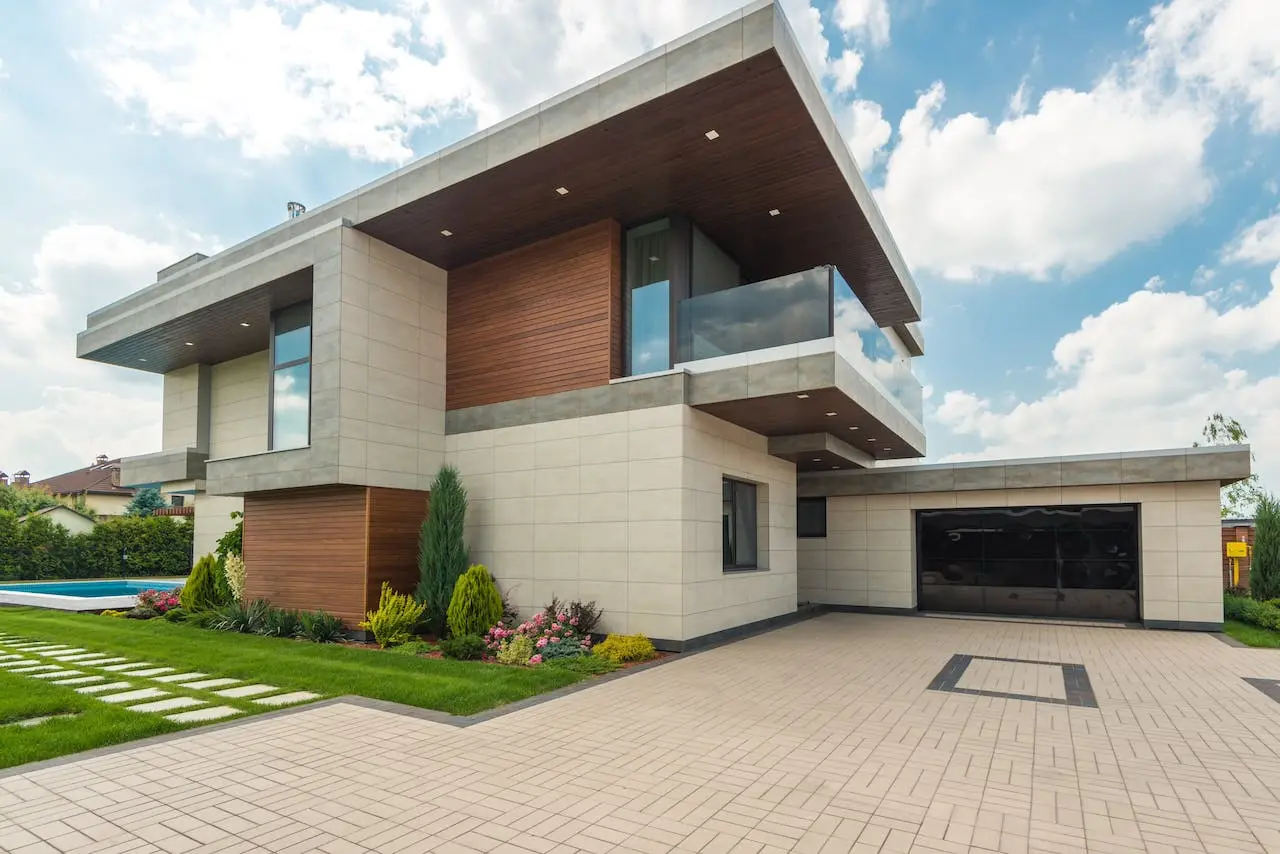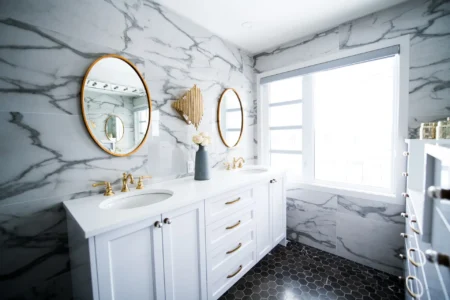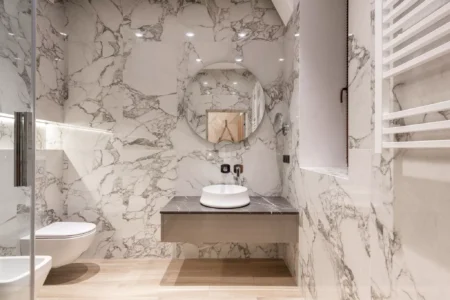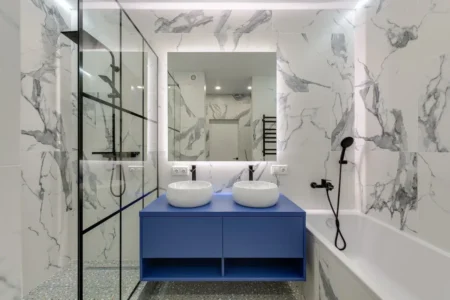Tiles are one of the most popular and versatile flooring options for any house. They can enhance the beauty, functionality and value of your home with their durability, variety and easy maintenance. However, choosing the right tiles for your house can be a daunting task, as there are many factors to consider, such as the size, shape, colour, finish, material, design and quality of the tiles. In this landing page, we will guide you through the process of selecting the best tiles for your home, and provide you with some tips and examples of different tiles for different rooms.
Things To Consider When Choosing Tiles
Before you start browsing through the endless options of tiles available in the market, you need to have a clear idea of what you want and what you need. Here are some things to consider when choosing tiles for your house:
- The style of your house: You should choose tiles that match the overall style and theme of your house, whether it is modern, traditional, rustic, minimalist or eclectic. For example, if you have a contemporary house, you might want to go for tiles that have sleek lines, geometric patterns, neutral colours and glossy finishes. On the other hand, if you have a country-style house, you might prefer tiles that have natural textures, warm colours, floral motifs and matte finishes.
- The function of the room: You should choose tiles that suit the function and usage of the room, as different rooms have different requirements and challenges. For example, if you are choosing tiles for the bathroom, you need to consider the moisture, humidity and slip resistance of the tiles, as well as the hygiene and cleaning aspects. Similarly, if you are choosing tiles for the kitchen, you need to consider the heat, stains and spills that the tiles will have to endure, as well as the aesthetics and durability of the tiles.
- The size of the room: You should choose tiles that fit the size and shape of the room, as different sizes of tiles can create different effects and illusions. For example, if you have a small room, you might want to choose large tiles that have fewer grout lines, as they can make the room look bigger and more spacious. On the other hand, if you have a large room, you might want to choose small tiles that have more grout lines, as they can add more interest and character to the room.
- The budget: You should choose tiles that fit your budget, as tiles can vary widely in price depending on the material, quality, design and brand. Generally, ceramic tiles are the most affordable and common type of tiles, followed by porcelain tiles, which are more durable and resistant. Natural stone tiles, such as marble, granite and slate, are the most expensive and luxurious type of tiles, but they also require more maintenance and care. You should also factor in the installation and maintenance costs of the tiles, as well as the warranty and after-sales service of the tile supplier.
Steps To Select Best Tiles For Home
Once you have considered the above factors, you can follow these steps to select the best tiles for your home:
- Step 1: Browse through online and offline sources of inspiration, such as magazines, websites, blogs, social media, catalogues and showrooms, to get an idea of the latest trends, styles and designs of tiles. You can also use online tools, such as virtual room planners, tile visualizers and colour palettes, to experiment with different combinations and see how they look in your space.
- Step 2: Narrow down your choices based on your preferences, needs and budget. You can use filters, such as size, shape, colour, finish, material, design and price, to sort and compare the tiles that match your criteria. You can also ask for samples, brochures and quotations from the tile suppliers, to get a better feel and understanding of the tiles.
- Step 3: Finalize your selection and place your order. You should check the quality, quantity and specifications of the tiles before you buy them, and make sure they are compatible with the subfloor, adhesive and grout that you will use. You should also hire a professional and experienced tile installer, who can ensure a proper and smooth installation of the tiles, and avoid any mistakes, damages or wastages.
Different Tiles for Different Rooms
As mentioned earlier, different rooms have different requirements and challenges, and therefore, different tiles are suitable for different rooms. Here are some examples of different tiles for different rooms:
- Ceramic Tiles for floor: Floor tiles are the most common and versatile type of tiles, as they can be used in any room of the house. They are durable, easy to clean and maintain, and can withstand heavy traffic, wear and tear. Ceramic Tiles are suitable for kitchens, bathrooms and balconies, as they can offer a variety of colours, patterns and designs, and can resist moisture, stains and spills.
- Porcelain Tiles for bathroom: Bathroom tiles are the most important and challenging type of tiles, as they have to deal with moisture, humidity, slipperiness, hygiene and cleaning. Porcelain Tiles are less porous and more durable than ceramic tiles, and can resist water, stains, scratches and bacteria. They are ideal for bathroom floors and walls, as they can offer a smooth and sleek look, and can also imitate the look of natural materials, such as marble, wood and stone.
- Terracotta Tiles for balcony: Balcony tiles are the most exposed and vulnerable type of tiles, as they have to face the changing weather conditions, such as sun, rain, wind and dust. Terracotta Tiles are rustic, warm and earthy, and can create a cosy and inviting look for any balcony. They are suitable for balcony floors and walls, as they can resist heat, cold and water, and can also blend well with plants and flowers.
- Vitrified tiles for Living Room: The living room is one of the most important and visible rooms to choose tiles for, as it is the place where you entertain your guests, relax with your family and express your personality and taste. Vitrified tiles are ideal for living rooms, as they can create a sophisticated and elegant look, and can mimic the appearance of natural materials, such as marble, wood and stone.
- Glass Tiles for Kitchen: The kitchen is another challenging room to choose tiles for, as it has to deal with heat, stains, spills, grease and oil. Glass Tiles are suitable for kitchen walls, backsplashes and accent walls, as they can add a touch of glamour and elegance to any kitchen, and can also reflect light and make the space look bigger and more spacious.
Conclusion
Tiles are an essential part of any house, as they can affect the appearance, performance and value of your home. Therefore, it is important to choose the right tiles for your house, based on the style, function, size and budget of your space. You should also consider the different types of tiles available in the market, and how they can suit different rooms of your house. By following the tips and steps mentioned above, you can select the best tiles for your home, and create a beautiful and functional space that reflects your personality and taste.
FAQs
How do I choose tiles for my house?
When choosing tiles for your house, consider the room’s purpose, the foot traffic it will receive, and the overall aesthetic you aim to achieve. Opt for durable, easy-to-clean tiles in high-traffic or wet areas and choose colors and patterns that complement your home’s decor.
Which size of tiles is best for home?
The best tile size for your home depends on the dimensions of the space and the visual effect you desire. Larger tiles can make a small room appear bigger and have fewer grout lines, while smaller tiles work better for intricate designs or smaller, more detailed spaces.
Which tile colour is best for home?
The best tile color for your home should align with your personal style and the room’s color scheme. Neutral colors like beige, grey, and cream are versatile and can make spaces appear larger, while bold colors can add character and depth to a room.
Should tile be lighter or darker than walls?
Tiles don’t necessarily need to be lighter or darker than the walls; it depends on the visual impact you want. Lighter tiles can make a room feel more open and airy, while darker tiles can add drama and ground the space. Consider the room’s natural light and size when deciding.




